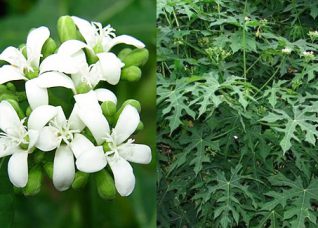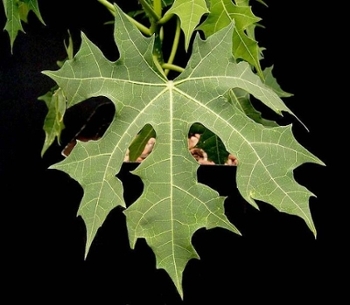
MinerAlert

MinerAlert
Cnidoscolus chayamansa
Euphorbiaceae
Tread softly, Cabbage star, Wild chaya
Chaya, Chayamansa, Candelero, Chichicaste, Mala mujer, Quelite

The stems and leaves.
This shrubby plant or small tree is native to Mexico and Central America

Photo: Frank Vincentz - Wikipedia commons
Leaves of C. chayamansa Public Domain/ Wikipedia